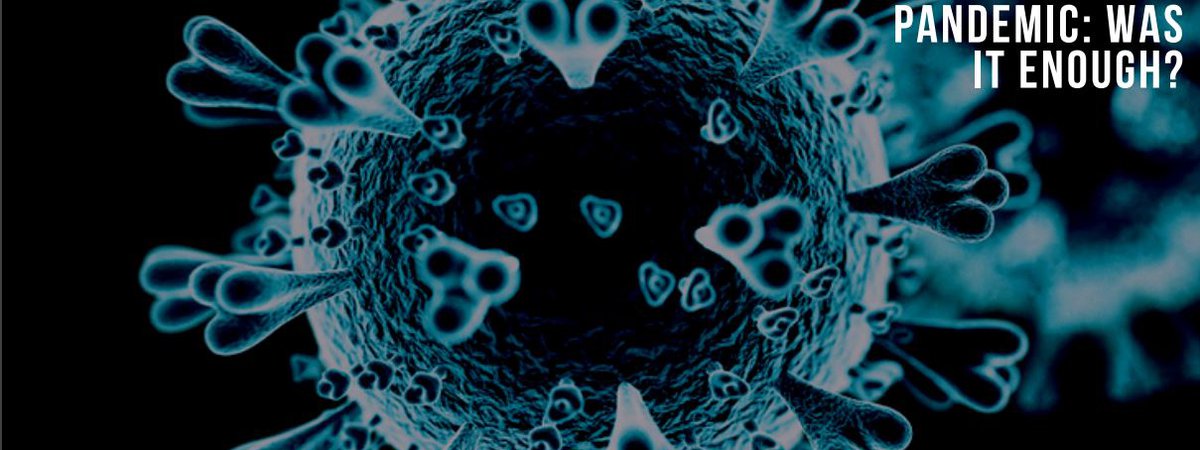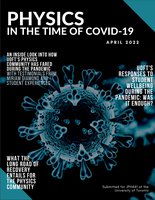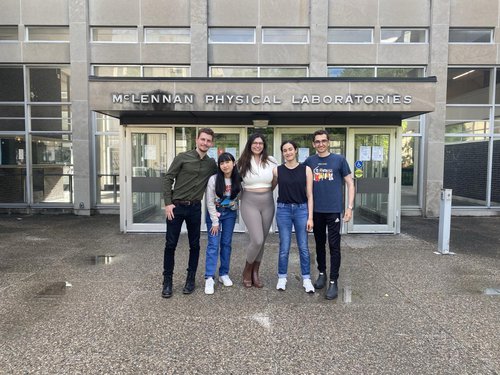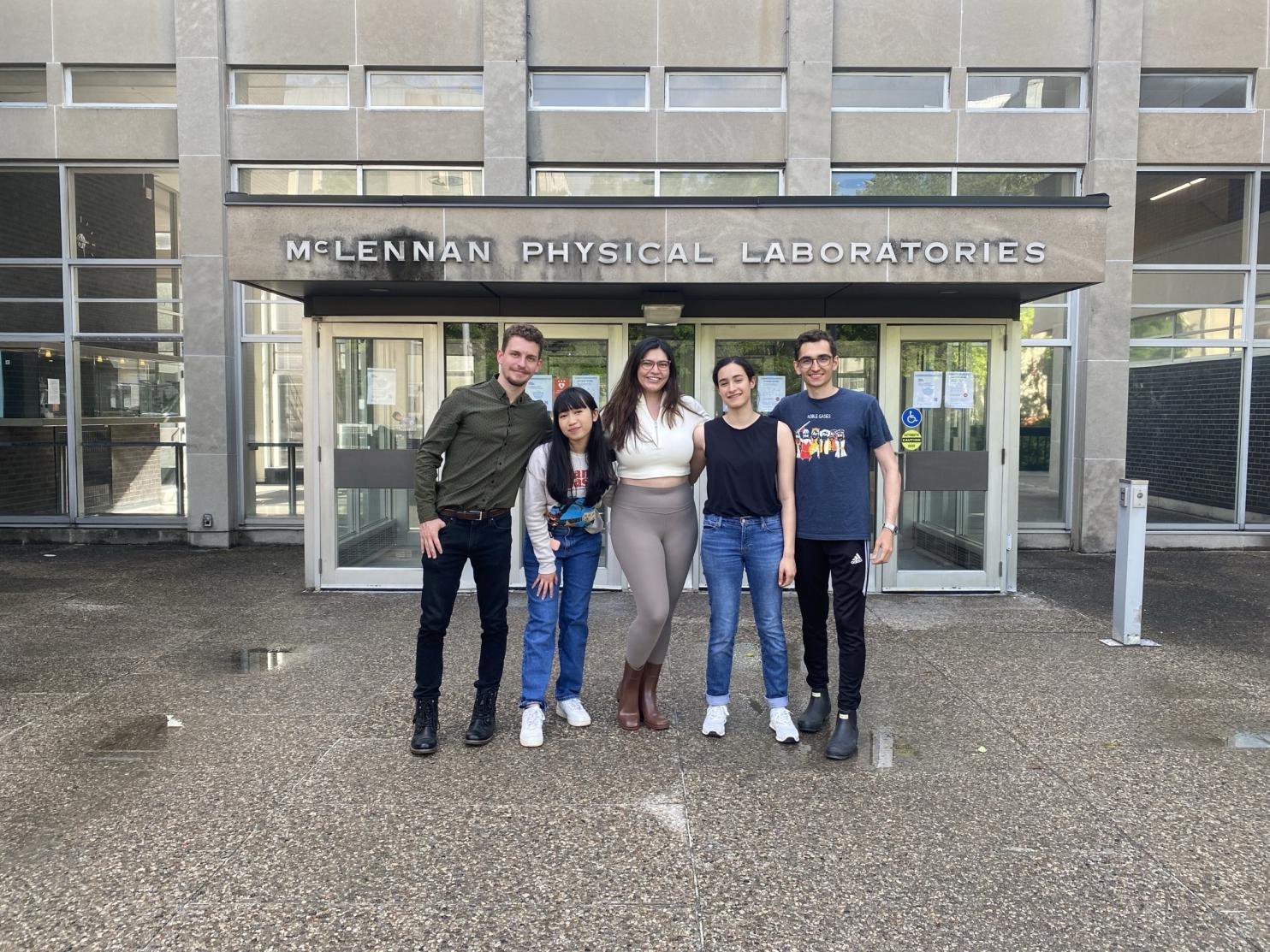Physics in the Time of COVID-19" resulted from a course project undertaken in JPH441 during the spring 2022 semester under the supervision of Dr. Carolyn Sealfon. Students Janine Charoonruk, Mariam Elsayed, Alexandra Holgate, Jason Rock, and John Elias Tzatzanis surveyed and interviewed the physics community (undergraduate and graduate students and faculty) on their experiences with COVID-19.
The students were able to use those results to help evaluate UofT’s response to the pandemic and how to better address future pandemics at the university.
The full report titled "Physics in the time of COVID-19" can be found here.
We asked Alexandra Holgate, who worked on the project, some questions :
What was the purpose of the this project?
This project was originally done for our final assessment to the science ethics course, Physical Science in Contemporary Society (JPH441). The purpose of this project was to look at the experiences different members of the U of T Physics Community had during COVID-19 as well as evaluate UofT’s response to the pandemic. We also compared and contrasted these results with other communities around the world to provide perspective and possible solutions going forward.
Why did you choose this topic? Why did you think it was important?
We all took Physical Science in Contemporary Society (JPH441) this semester, which is an ethics course that challenged us to have a more human understanding of science and its social impacts. This project was for our end of semester final and we were given a lot of creative agency on deciding what to do the project on. We were literally told we could choose any topic to research as long as it was related to science and society. Our professor, Carolyn Sealfon, was extremely oriented around student-led classes and constantly created opportunities for us to take our learning into our own hands. Because of Dr. Sealfon’s teaching style, the class experience was essentially what you chose to get out of it. That general attitude helped give me the freedom to think, okay I can do this project on anything I want to know more of so what does that look like for me? The topic of COVID-19 and its effects on the physics community came almost instantaneously to mind. Much like my peers, doing school through COVID-19 has been an isolating experience with both benefits and drawbacks and I wanted to sort of touch base with other people in the physics community and see how the pandemic was for them too.
Considering how COVID-19 is probably not the last pandemic we will go through in our lifetimes, the information gathered from this project might very well have value in helping with future pandemics. I played a lot with the idea of being virtually unlimited to what this project could be and decided I wanted to run it like a survey to gather and compare real-time data and testimonials from the physics community at U of T. I knew it would be a little more work than doing a regular research project, but I felt like this was a topic that needed to be done. This project really only became a reality because of my peers who jumped onto the idea and were also enthusiastic about committing to the extra work to take it as far as we could go. I think it was totally worth it overall and the project gave me a lot more insight on what we could be doing better for ourselves in the event of another global pandemic as well as what steps our community could be doing better of going forward.
What did you learn?
We ended up breaking down the effects of COVID-19 into 5 different subsections which were: social impacts, accessibility, education, research funding/policy and innovation and application. With the broad range of topics, we learned quite a bit about how different members of the physics community have been affected during COVID-19. Because we divided the work by topic, I think if you asked another member of the group what their takeaway was they would have a totally different response than me and I think that was an essential feature of this project; it really reflected the variety of experiences members of the physics community had during the pandemic.
For me, personally, I think learning about the gap between wellness services and meeting more nuanced student needs was interesting and not just because there is that disparity. I think a lot of people would agree that students could take more advantage of the help the university provides while still supporting the sentiment that the university should be doing more to help connect those students and bolster their resources.
Where I actually learned something from this project was how it helped show exactly what some of these nuanced issues were that students were challenged with during COVID-19 and that’s not something we necessarily get a lot of public info about from the university. From the survey, this nuance largely came from female identifying students feeling as though they had an increase in their at home responsibilities and chores compared to their male counterparts during the pandemic. Almost all of the women surveyed highly identified with this issue. Subsequently, almost all of the women surveyed felt logistically challenged to participate in their academic pursuits compared to their male counterparts. What I take from that is that the increase in household work could possibly be related to women being more disadvantaged than their male peers when it comes to being able to engage in physics-related activities. For full context, however, women did not feel more or less academically challenged compared to the guys. I think details like this are important to consider when deciding on what kind of support to give students.
Here are more examples of what my group members learned from their sections:
Janine: “I think the biggest thing I learned from making this magazine was that a lot of the changes made to support students, researchers, and university instructors during the pandemic were already things that should have been implemented (or at least considered) prior to COVID in order to accommodate those with disabilities; and COVID is proof that these changes can be done on a large scale on short notice. I think it was also really interesting to see different stances and opinions of the u of t physics community in our survey results, some of which have considerably varied responses”
Mariam: “The biggest thing I learnt was how interdisciplinary physics could be and how physicists tackled very different challenges of the pandemic. I've read about physicists around the world invented different devices to quickly/efficiently manufacture PPE, how different physical principles were used to research the virus, how the spread of the virus was modelled using more innovative methods, and more.”
Jason: “Throughout this project, I learned about the many issues the pandemic has imposed on physics research. However the biggest learning experience I had was hearing how the pandemic has affected research through the perspective of physics faculty. As a student researcher, I have only seen the surface level effects of how the pandemic has affected our lab. However through speaking with professor Diamond, I learned that the pandemic has caused a much deeper negative impact on research. An example is that grants and funding timelines had to be extended to account for delayed work while still needing to support graduate student / post doc. financially.”
John: “the pandemic was a huge opportunity to rigorously test new teaching strategies that had kind of been lurking in the background over the last decade, like asynchronous or distance learning. As a result, the landscape for higher level education has drastically changed, opening up more avenues for collaboration and increasing the reach of existing institutions.”




